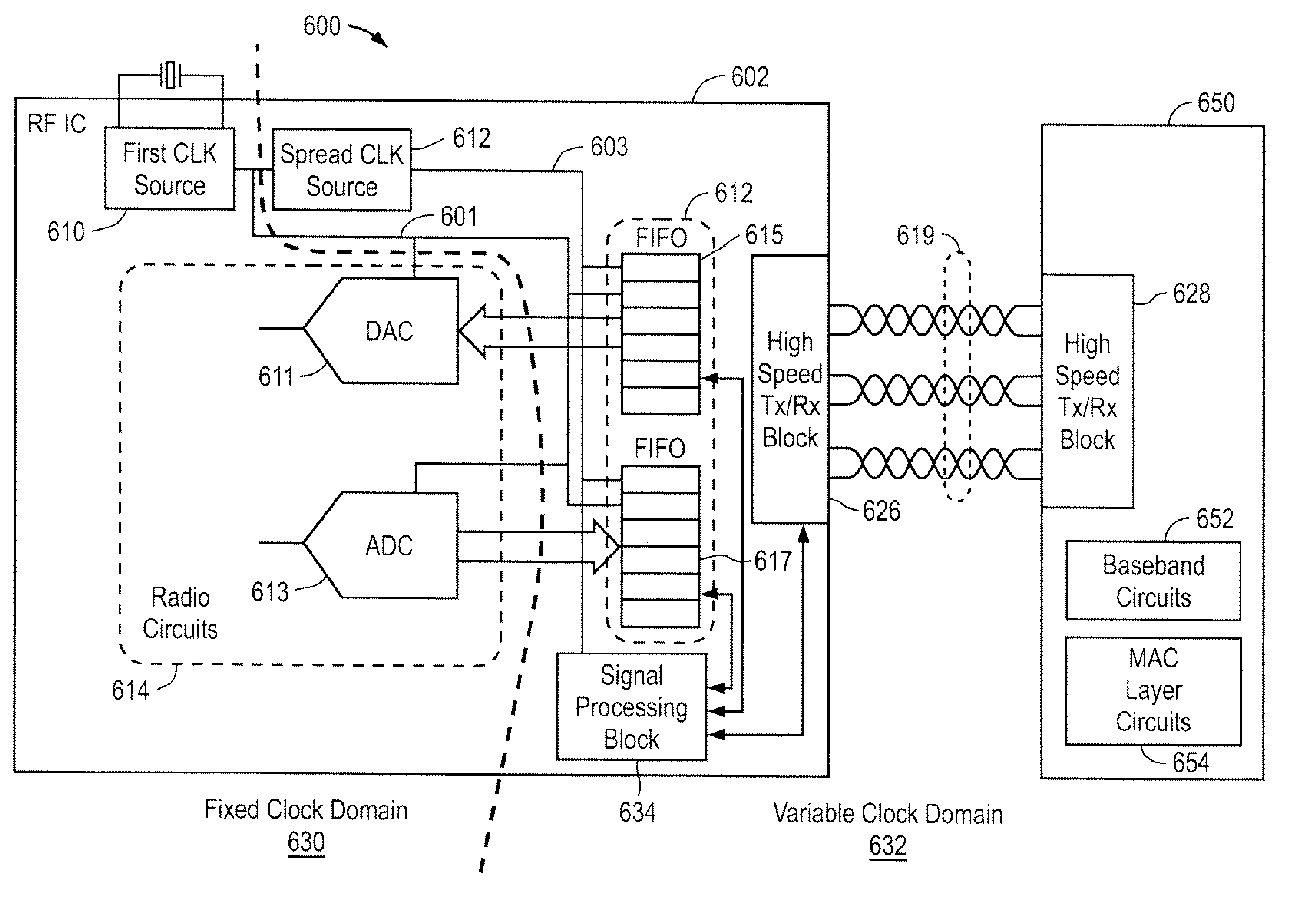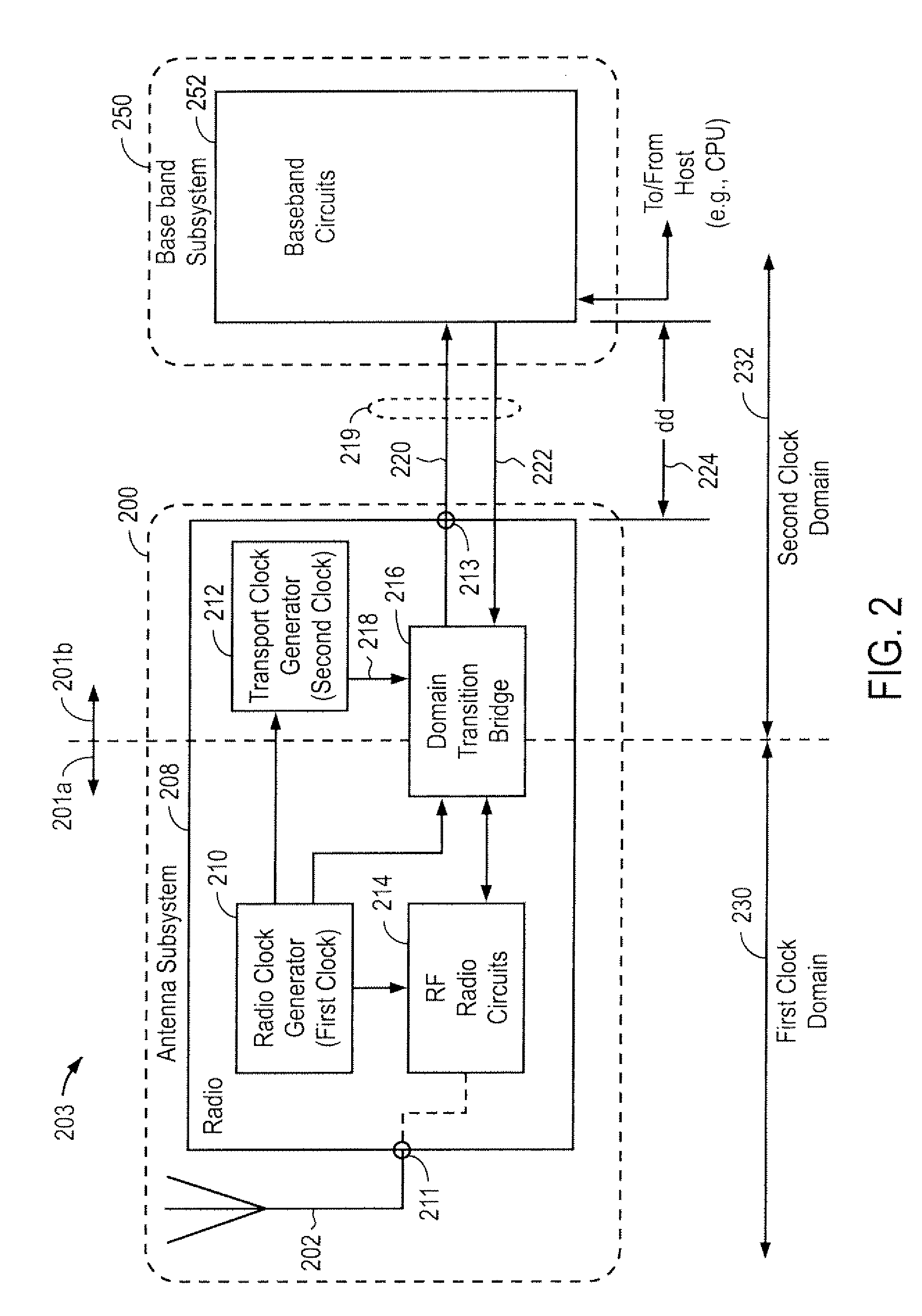Radio frequency antenna system and high-speed digital data link to reduce electromagnetic interference for wireless communications
- Summary
- Abstract
- Description
- Claims
- Application Information
AI Technical Summary
Benefits of technology
Problems solved by technology
Method used
Image
Examples
Embodiment Construction
[0024]FIG. 2 illustrates an example of an antenna subsystem for a radio frequency (“RF”) communications system 203, according to one embodiment of the present invention. An antenna subsystem 200 includes an antenna 202 and a radio 208 for exchanging communications data via a high-speed digital link 219 with a base band subsystem 250, whereby radio 203 operates to transmit and / or receive wireless signals, such as RF signals from 3 kHz and 300 GHz (including VHF, UHF, and microwave frequencies). High-speed digital link 219 reduces interfering emissions (i.e., electromagnetic interference, or “EMI”) that might otherwise violate a specific emission mask. An emission mask defines the maximum power levels of EMI emissions that RF communications system 203 can emit over frequency under certain operating conditions. As shown, antenna subsystem 200 includes at least two clocks, each of which defines a separate clock domain. In particular, a radio clock generator 210 defines a first clock dom...
PUM
 Login to View More
Login to View More Abstract
Description
Claims
Application Information
 Login to View More
Login to View More - R&D
- Intellectual Property
- Life Sciences
- Materials
- Tech Scout
- Unparalleled Data Quality
- Higher Quality Content
- 60% Fewer Hallucinations
Browse by: Latest US Patents, China's latest patents, Technical Efficacy Thesaurus, Application Domain, Technology Topic, Popular Technical Reports.
© 2025 PatSnap. All rights reserved.Legal|Privacy policy|Modern Slavery Act Transparency Statement|Sitemap|About US| Contact US: help@patsnap.com



